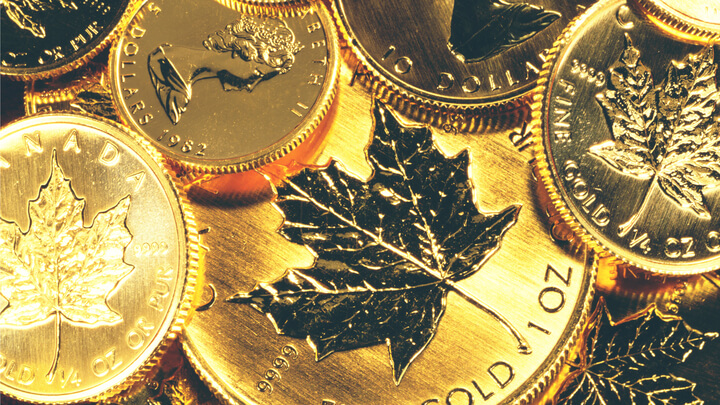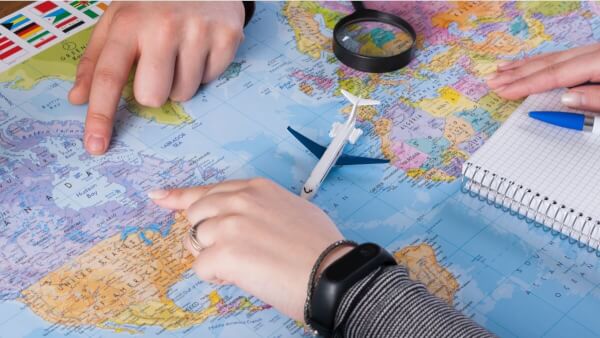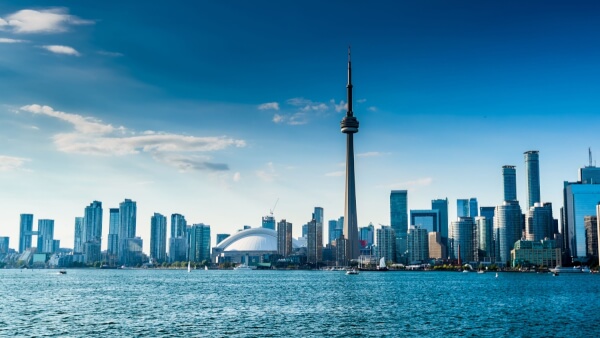Best travel cards for Canada in the UK
Read our guide on the best travel card for Canada, including card comparisons and travel tips.

Over 16 million tourists travel to Canada each year. Although most come from neighbouring U.S.A., Canada also welcomes huge numbers of visitors from Europe, Japan, South Korea, China and Brazil.
There’s something for everyone in Canada - whether you’re looking for outdoor adventure or a cultural city break. But if you’re headed there, you’ll need some money to make the most of the trip.
This guide walks you through Canada’s currency and banking system, with everything you need to know about getting - and spending - the cash you need.
The official currency of Canada is the Canadian Dollar.
| --- | --- |
| Symbols | CAD, C$ (to distinguish it from other dollar currencies) |
| Nicknames | Sometimes called the ‘loonie’ because of the picture of a loon (a common diving bird living off Canada’s shores) on the one dollar coin. |
| 1 CAD | Each dollar is divided into one hundred cents. |
| CAD coins | Coins are issued in denominations of 5, 10, 25 and 50 cents, as well as $1 and $2. The 50c coins are seldom used, however. |
| CAD banknotes | Banknotes in common circulation are $5, $10, $20 and $50, and there are also higher value $100 notes which are less frequently seen. (It’s perfectly legal for Canadian businesses to refuse to accept $100 notes if they have concerns about counterfeiting.) |
All Canadian bank notes are now made of polymer plastic, which can be unfamiliar if you’re used to paper notes. This material is prone to sticking together when it’s brand new, so be careful when counting out your money. If you’re visiting in summer, don't leave cash out in the direct sunlight (in the car, for example) - it’s been known to shrivel in extreme heat!
In some southern cities in Canada and in popular tourist resorts, U.S. Dollars are accepted as a means of payment - but check that the rates applied are fair before paying.
With CAD widely available, whether or not you buy your currency before you leave for Canada is entirely a matter of personal choice. If you feel more comfortable having some cash in your pocket then pick up some CAD before you leave. If you shop around wisely, the rates will be similar at home and upon arrival.
If you do find that you need cash upon your arrival in Canada, you can change a small amount at the airport - although the exchange rates are unlikely to be the best in town. The same goes for exchanging money at your hotel. It’s a convenient option, but usually not the cheapest. If you can hold off until you're in town you’ll probably find better deals.
Wherever you decide to change your currency, you should also watch out for hidden fees. Even if an exchange claims ‘Zero Commission’, they add in their profit to the exchange rate they offer you. If you can’t find a reasonable exchange rate, then using an ATM is often a better choice for travellers.
To know if a rate is fair or not you’ll need to understand the mid-market exchange rate. This is the only real exchange rate, also known as the interbank rate. You should use this mid-market rate to compare the tourist exchange rates offered to you - which con often be much worse. Find out the mid-market rate by using a currency converter online so you can keep up with the daily fluctuations and know if you’re being ripped off.
If you’re changing cash once you arrive in Canada then make sure that the notes you intend to exchange are in good condition. Exchange offices may refuse to take damaged or torn notes, so be prepared!
Traveller’s Cheques are not widely used in Canada and may be subject to additional fees. Outside of tourist areas, it’s very possible that businesses will not accept Traveller’s Cheques, leaving you with no option but to cash and exchange them at a bank.
Because the rates of exchange tend to be, at best, average, Traveller’s Cheques have fallen out of favour. Most visitors these days rely on cards and ATMs for cash withdrawal.
Major credit and debit cards are widely accepted in Canada. Visa and MasterCard are the most popular, with American Express slightly less used. If your main card is Amex, it’s worth carrying some cash in case you come across a problem. Or, if you get stuck, use one of the ATM locators in the next section to find a nearby bank machine and withdraw cash directly.
If you choose to use a credit or debit card when you’re abroad, you might be asked if you want to be charged in your home currency. This is something called Dynamic Currency Conversion (DCC).
With DCC you can choose to see the cost of the transaction expressed in your home currency. Though it may seem easier to understand what you’re paying if you see it in a currency you’re familiar with, it’s generally not a great idea. DCC gives you worse conversion rates between your currency and CAD in addition to the occasional additional fee. Always opt to pay in the local currency instead.
Finally, to make sure you don’t get hit with your bank’s fraud protections. Let them know you plan on travelling. If not, your bank may see foreign payments and suspect a problem, resulting in your account being frozen for investigation. Give them a quick call before travelling to make sure there isn’t an issue.
ATMs are easy to find in Canada. Use the locator tools below to find one in a convenient location for you.
Visa ATM locator
MasterCard ATM locator
Amex ATM locator
ATMs generally charge a fee for foreign currency withdrawal, in addition to any charges that your home bank might add. However, some Canadian banks are part of the Global ATM alliance and, therefore, offer perks to customers of other banks within the group. Find out if your home bank is in this group before you travel or if they have a partner bank in Canada.
DCC (see the previous section) is often applied to ATM cash withdrawals. You might be asked if you would like your withdrawal to be charged in your home currency. Decline the option. It’s not a great idea to allow the foreign ATM do the conversion for you. Because they have no incentive to keep you, foreign banks nearly always offer worse rates than your home bank does. As a result, it’s generally best to select to be charged in local currency for the most favourable exchange rates.
Before you travel to Canada it’s worth checking if your home bank has any partnerships with banks operating in Canada. If so, you might be able to get cheap or free cash withdrawals from certain bank ATMs. For example, Scotiabank is part of the Global ATM alliance which works with partners globally, and many other Canadian banks have arrangements in place with banks from the U.S.
Canada has a sophisticated banking segment with national and global brands operating alongside regional banks. The ‘Big Five’ listed below dominate the national banks, and can be found throughout the country. In addition, there are a number of foreign banks that also offer their services in parts of Canada.
Here are some of the more common ones:
Another great option, for simple access to your money abroad, is to use Wise.
If you have a bank account in Canada, or know someone who does, you can transfer money between countries using the real mid-market exchange rate. It's a quick and convenient way to get your cash, with no hidden fees for an even better deal.
*Please see terms of use and product availability for your region or visit Wise fees and pricing for the most up to date pricing and fee information.
This publication is provided for general information purposes and does not constitute legal, tax or other professional advice from Wise Payments Limited or its subsidiaries and its affiliates, and it is not intended as a substitute for obtaining advice from a financial advisor or any other professional.
We make no representations, warranties or guarantees, whether expressed or implied, that the content in the publication is accurate, complete or up to date.

Read our guide on the best travel card for Canada, including card comparisons and travel tips.

Should you pay with cash or card in Canada? A handy guide including cash etiquette, Canadian ATMs and using your UK card.

Can I use Revolut in Canada? A handy guide covering using your Revolut card in Canada, spending in CAD and much more.

Whether you call it the Great White North or just Canada, the reality is still that there are restrictions on how much cash you can take in or out. If you...

If you’re headed to Canada any time soon, you’re going to buy Canadian Dollars. Luckily, despite its low population density, Canada has a large number of...

Alberta’s capital is a hub for culture and arts. Edmonton’s growing subculture is powered by the recent influx of creative types and unique festivals such as...